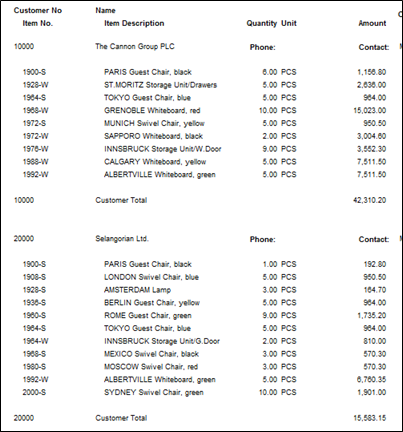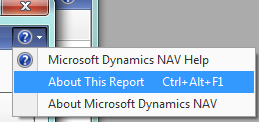The Classic reporting engine and the RTC reporting engine are two very different animals. Hopefully, we can highlight the differences today for some of the deeper topics we’ll cover this week.
Microsoft Dynamics NAV classic reports are highly iterative. For example, this Customer/Item Statistics report is a great example:

The engine will loop through the Customers that match the user supplied filters. For each Customer, it will go through some related set of Value Entry records (for item sales data). This is a very clear teamwork in the results:

What is more interesting is that the RTC reporting engine does not work in a hierarchy at all. It smashes the data flat into one giant resultset. Header items are simply repeated for every row. In our above sample report, we’d have a resulting table like so (subset to be more readable):
|
Customer No. |
Customer Name |
Item No. |
Item Name |
Amount |
|
10000 |
The Cannon Group |
1900-S |
PARIS Chair |
1,156.80 |
|
10000 |
The Cannon Group |
1928-W |
Storage Unit |
2,636.00 |
|
10000 |
The Cannon Group |
1964-S |
TOKYO Chair |
964.00 |
|
20000 |
Selangorian |
1900-S |
PARIS Chair |
192.80 |
|
20000 |
Selangorian |
1908-S |
LONDON Chair |
950.50 |
You can see the flattened results for yourself. Run a report in the RTC. Under the Help button, select About This Report, like so:

You may get a message like so:

Do as it instructs. When you head to About This Report again, you’ll see something akin to:

That’s a giant List of all the data the report is using to produce the results. You’ll see all sorts of things in there you may not realize would be, such as Captions, Formats, Header info. This feature can be particularly helpful, since under the Actions menu, you can Send To -> Excel all the raw data. If you ever doubt your report’s data, you can analyze it in this way.
Understanding that the data is giant and flat may help you better understand why some layouts will have things such as =First(SomeField) or =Sum(SomeField), like so:

It’s also a key understanding for making the most out of the RTC format’s powerful Table and Matrix controls, which we’ll go into depth on this week.
